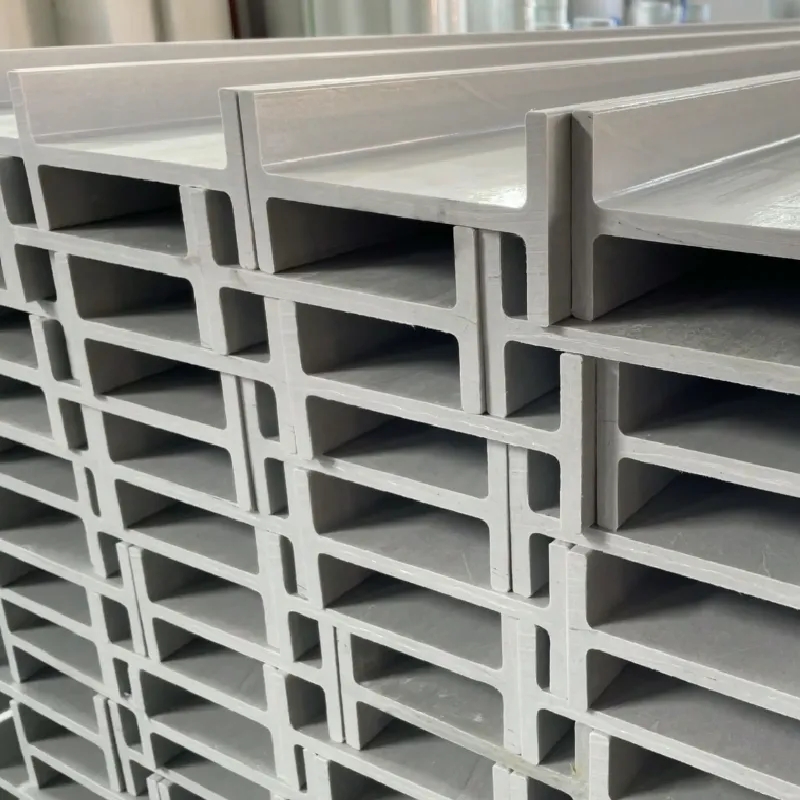loading...
- No. 9, Xingyuan South Street, Dongwaihuan Road, Zaoqiang County, Hengshui, Hebei, China
- admin@zjcomposites.com
- +86 15097380338
- Welcome to visit our website!
GRP Walkway Grating Solutions for Safety and Durability in Industrial Applications
Understanding GRP Walkway Grating An Insight into Its Benefits and Applications
GRP, or Glass Reinforced Plastic, walkway grating has emerged as a popular choice for various industrial and commercial applications. It combines the strength and durability of fiberglass with the lightweight properties of plastic, resulting in a material that offers numerous advantages over traditional alternatives such as metal and wood. This article explores the characteristics, benefits, and diverse applications of GRP walkway grating.
What is GRP Walkway Grating?
GRP walkway grating is a composite material made primarily from fiberglass reinforced with plastic. Unlike conventional grating made from steel or aluminum, GRP is designed to withstand harsh environments, making it suitable for a wide range of applications. The manufacturing process involves layering strands of fiberglass with a resin that hardens to form a strong, stable platform. This unique structure not only enhances its load-bearing capacity but also increases resistance to corrosion, chemicals, and UV light.
Key Benefits of GRP Walkway Grating
1. Corrosion Resistance One of the most significant advantages of GRP grating is its resistance to corrosive chemicals and environmental conditions. Unlike metal grating, which can rust and deteriorate when exposed to elements like water or chemicals, GRP maintains its integrity over time. This property makes it ideal for use in chemical processing industries, wastewater treatment plants, and coastal environments.
2. Lightweight and Easy to Handle GRP walkway grating is considerably lighter than metal alternatives, making it easier to transport and install. This lightweight nature reduces installation costs and labor requirements, further enhancing its appeal for construction projects.
3. Safety Features Safety is paramount in industrial and commercial settings, and GRP grating doesn’t disappoint. Its slip-resistant surface provides excellent traction, reducing the risk of accidents in wet or oily conditions. Additionally, the absence of sharp edges minimizes injury risks during handling and installation.
4. Longevity GRP walkway grating is designed for durability and longevity. Its resistance to fading, UV damage, and corrosion means it can last for decades without significant maintenance. This longevity translates to cost savings over time, as the need for replacements or repairs is significantly reduced.
grp walkway grating

5. Customizability GRP walkway grating can be manufactured in various colors, sizes, and shapes to meet specific project requirements. It can be tailored for different applications, whether for pedestrian walkways, machinery platforms, or slip-resistant stairs.
Applications of GRP Walkway Grating
The versatility of GRP walkway grating allows it to be used across multiple sectors. Some of its common applications include
- Industrial Facilities GRP grating is extensively used in factories, refineries, and power plants, where it can withstand heavy loads, chemical exposure, and temperature fluctuations. - Maritime Environments Given its corrosion resistance, GRP grating is widely utilized in docks, piers, and shipbuilding facilities. Its lightweight design makes it easier to install on marine vessels.
- Wastewater Treatment Its ability to resist chemical corrosion and decay makes GRP grating an ideal solution for wastewater treatment plants, where it can be exposed to harsh conditions.
- Public Infrastructure Parks, walkways, and bridges often feature GRP grating as a safe, durable surface that withstands both foot and vehicular traffic.
Conclusion
GRP walkway grating represents a modern solution for a wide array of applications, particularly in environments where durability and safety are paramount. Its unique combination of lightweight properties, corrosion resistance, and strong load-bearing capabilities make it an ideal choice for industries ranging from construction to maritime operations. As businesses continue to adopt innovative materials like GRP, the benefits in terms of longevity, safety, and cost-effectiveness will solidify its place as a superior choice in the grating market. Whether you’re considering GRP for a new project or looking to replace traditional materials, the advantages it offers are clear and compelling.
-
Transform Your Spaces with FRP Grating SolutionsNewsNov.04,2024
-
The Versatility and Strength of FRP RodsNewsNov.04,2024
-
The Excellence of Fiberglass Water TanksNewsNov.04,2024
-
The Benefits of FRP Grating for Your ProjectsNewsNov.04,2024
-
Elevate Your Efficiency with FRP Pressure VesselsNewsNov.04,2024
-
Welcome to the World of FRP Pressure VesselsNewsOct.12,2024
-
Unveiling the Future of Filtration: Why FRP Filter Vessels are a Game ChangerNewsOct.12,2024
